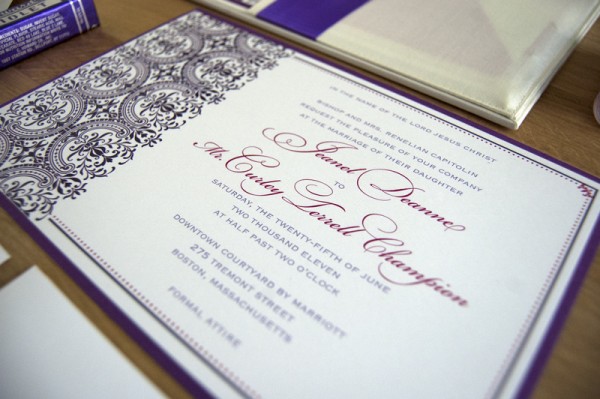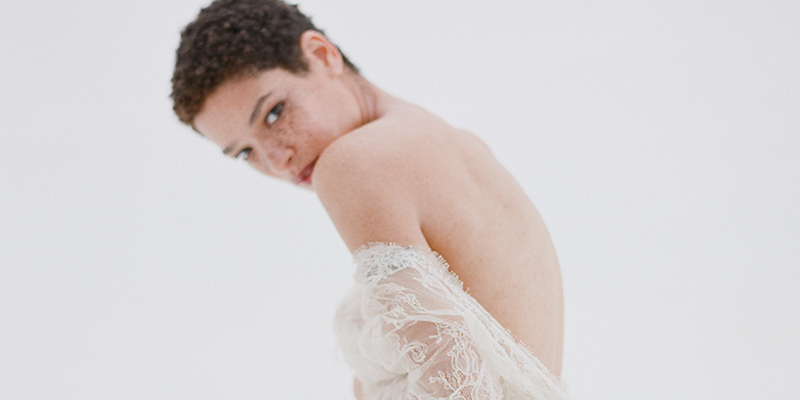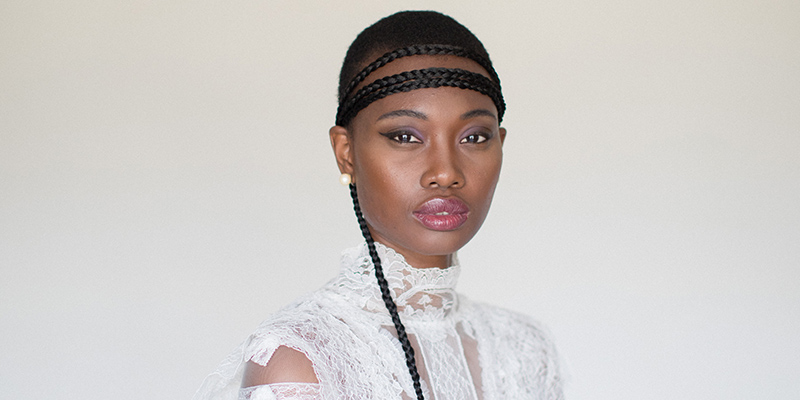
Wedding etiquette is one of those things that people beat theirs heads against constantly before the big day. Ultimately, it’s the couple’s wedding and their opinions about how things should be worded matter most. But why do we look to tradition is the first place? Because the old ways are often the best ways.
While at the National Stationery Show, I got to sit in on a presentation by Peggy Post of the famous Emily Post Institute. She had a lot of great tips and ideas on how to relax in the face of etiquette dilemmas. And, since this topic is so contentious, I’m splitting into two parts.
ANATOMY OF AN INVITATION
– Who is inviting?
– Who’s getting married?
– When: Date
– When: Time
– Where is it being held?
– Response details
– Reception information
– Attire
The key is making sure guests have as much information as possible. Wedding invitations are worded the way they are to reflect the tradition of the bride’s family graciously giving her away while inviting family and friends to join them for this happy occasion.
THE HOST LINE
Also known as who’s paying the bill.
Those paying the bill issue the invitation and, traditionally, that was the parents of the bride. If the bride’s parents are still married, their names appear in the first line of the wedding invitation.
If the bride’s mother kept her maiden name, her name should appear on the first line and the father’s name, preceded by “and” on the second line.
If they’re divorced, the parents’ names appear on separate lines, mother first.
Invitations can be issued by the groom’s parents, of course, but the format is a little different. The parents’ relationship to the groom is mentioned on the fifth line instead of the third line. For example:
Mr. & Mrs John Doe
request the honor of your presence
at the marriage of
Miss Jane Smith
to their son
James Doe
…
A good catchall that’s been gaining in popularity is “Together with their families.” This indicates that the invitation is being issued by the couple.
REQUEST LINES
This line invites your guests to the event and the wording varies based on where the ceremony is being held. For a wedding in a church, temple, synagogue or any house of worship the wording is: “request the honor of your presence.” For weddings held in any location other than a house of worship, “request the pleasure of your company” is used.
THE COUPLES’ NAMES
The bride’s given names (first and middle) are used on invitations issued by her parents. No social titles or last names since it is assumed that she has never married before and has the same last name as her parents. If the last name is different, include it.
Traditionally, the groom always uses his full name. Initials are never properly used on formal wedding invitations, Men who dislike their middle names should just omit it instead of using an initial.
What about “esquire?” While some lawyers have adopted “esquire” as a title to designate them as attorneys, it is not recognized as a proper title for social invitations in this country. In England, the title means “gentleman” and is used to honor a man when addressing him, making it an inappropriate reference for a woman.
 DATE & TIME
DATE & TIME
The day of the week and the date are written out in full: day of the week, date of the month, month.
Although it is not necessary to include the year, it’s OK to do so. Your invitation is likely to be saved by family and friends. Including the year will help them remember your special day. The first letter of the year should be capitalized: Two thousand ten. You can go either way on including the “and” in the year.
The time is presented on one line and all lowercase letters. The time of day can be indicated by using either “in the morning,” “in the afternoon,” or “in the evening. For most times this is unnecessary since weddings held at six o’clock are obviously in the evening. Invitations for weddings held at eight, nine or ten o’clock should designate morning or evening to eliminate confusion.
If the wedding is at:
noon, use “at twelve o’clock”
6:30, use “at half after six o’clock”
6:45, use “at three quarters after six o’clock,” but who really gets married on the quarter hour?
REMEMBER: All of these points are guidelines to follow, not unbreakable rules set in stone.
Please check in next month for Part 2 of etiquette and wording.
{photo credits: à deux: bespoke bridal paper}
[divider]
Kelli Parker is the executive creative director for à deux: bespoke bridal paper, a boutique custom wedding stationer in Boston, MA. With a background in journalism, art and business, and more than 10 years of experience as a graphic designer, Kelli adores weddings, paper, tiny boxes, silk charmeuse, many shades of purple and peonies. Visit this MBM Blogger’s profile here.







[…] this link: Stationery Wording and Etiquette: Part 1 | Munaluchi Bridal Magazine I Love Social BookmarkingSubscribeDiggdel.icio.usStumbleUpon Posted by admin on Jun 15, 2012 in […]